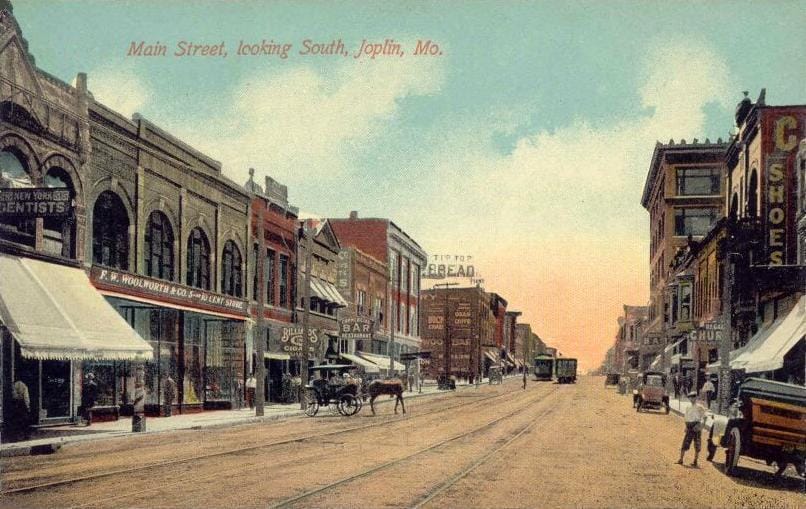
The city of Joplin was officially incorporated on this date in 1873.
The area that would become Joplin was settled by the Reverend Harris G. Joplin in 1839, who established the first Methodist church in the region. When lead and zinc ore were discovered here in the 1870s, Joplin, then known as Joplin City, began to grow rapidly. The mining boom attracted a diverse population of miners, entrepreneurs, and adventurers, leading to a period of rapid development and expansion.
During this time, the town was known for its frontier mayhem, a period often referred to as the “reign of terror.” The town was characterized by a lack of formal law enforcement, which allowed for widespread gambling, saloons, and a notorious red-light district. Violence and crime were common, with frequent shootouts, robberies, and disputes over mining claims. It was a chaotic time, with the town’s rough-and-tumble reputation attracting more miners and settlers seeking their fortunes.
Adjacent to Joplin, the town of Murphysburg was founded in 1871 by Patrick Murphy, who was also drawn to the area by the mining opportunities. Murphysburg and Joplin grew side by side, each with its own distinct identity and governance. However, as the two towns expanded, there was a growing need for a unified administration to better manage the region’s development and resources.
In the early 1880s, there was an attempt to merge Joplin and Murphysburg into one city, to be named Union City, but this attempt failed due to disagreements and rivalries between the two towns, particularly over which town would dominate in the new arrangement.
It wasn’t until March 23, 1873, that Joplin and Murphysburg finally agreed to merge and officially incorporate as the city of Joplin. This merger marked the beginning of a new era for the region, as the combined city was better equipped to manage its growth, enforce the law, and develop infrastructure.






